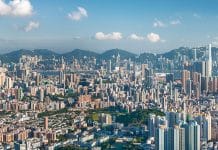ASEAN Day on 8 August 2023 marks the 56th anniversary of ASEAN. While progress throughout the almost six decades of existence has been mixed, the future ahead is increasingly volatile for the entity, unless it seeks to change its long held orientation and dogma.
Historical regional cohesiveness in Southeast Asia is primarily tied by trade and economic relativity and common yearning for security assurances.
ASEAN was born out of a common fear of communism and external threat, and it remains the same for now. However, the capacity to stand up to external threats from a collective joint deterrence and capacity point of view remains lost
Regional awareness and spirit of communal understanding and appreciation remain low, as compared to established systems especially the EU.
The lack of new drive to enhance intra regional connectivity, people to people appreciation and mobility and openness in economic and business investment advantages and incentivization efforts have hampered true capitalization of joint regional strength and asset derivation. Peer competition and wariness remain stumbling blocks, and worsened by lingering geopolitical distrusts.
ASEAN has been trapped by its own principles of policy and decision making model, and its concept of neutrality in managing relations with external powers. Changing regional and global security architectures and paradoxes have meant that conventional status quo and dogma of past systems are increasingly irrelevant and prohibitive in ensuring ASEAN remains secure and resilient.
One of the main objectives in the founding principles and aspirations is the need for regional cohesiveness and appreciation of the peoples’ resonance and affiliation within the scope of regional spirit and solidarity. Primary to this is the spillover impact of economic prosperity and increasing positive economic impact from a better intra regional trade and investment and linkages of strategic interdependence.
Others include the aspiration for a stronger people to people ties, understanding and community confidence and appreciation in creating a deeper regional bond and ease of mobility and transfer of knowledge and capital. All these remain wanting, and the region and entity are still mired in wariness, security dilemma, distrust and prevailing national identity and continental barriers.
With a region that is as dynamic as Southeast Asia, the different models of governance and historical systems remain a barrier in achieving the intended models as outlined. Systemic disparities in development and economic resilience, urban-rural gap, literacy and rights gap, and continental vs archipelago differences, all remain structural hindrances to a regional future-driven socio-economic collective development.
ASEAN relies on external economic and market lifelines and support in fuelling its future economic relevance, and intra-growth and connectivity in terms of ease of investments and doing business remain challenging. Internal peer competition and scramble for geostrategic interests, with the urgency in shoring up individual alliances and affiliations with external support, all laid bare the inadequate sustaining tools in creating a credible bulwark of ASEAN centred capacity building.
This region is primarily shaped by economic and security importance, and openings for value based and normative moral high ground for strong value driven developmental essence are inadequate, thus shaping current narratives that easy and quick reliance on capital and investment inflow remains the easier way out.
Despite being labelled as the most important region with one of the greatest prospects of socio-economic strength with its vast population of more than 650 million people, its growing vibrant young demographic advantage, abundance of natural and energy resources that will be able to ensure a lasting and resilient supply chain security and food and energy security, its strategic and vital geographical location in the centre of the global trade and mobility of supply chain, all these remain not fully seized upon due to the inability to break from past dogma and trapping in orientations and reality-based approaches.
The fact remains that the region will still need to rely predominantly on external powers and sources in ensuring its security and economic circle, and the tools of technology and scientific parameters that are needed to fully utilize and implement the raw advantages and assets that it possesses.
Lacking in all parameters of hard and soft power projection that are matching those of external influences, the region and ASEAN remain subservient to the intent and influences of policies by external powers, all while pinning hopes on external powers’ self restraint and with the perceived returns of its neutrality concept
Consistent realities on the ground that witnessed the various hard power projections and militarization activities in the South China Sea, with continuous grey zone tactics and intimidation especially on the Philippines’ assets as recent as this week with the water cannoning of its vessel, all reflect the failed model and approach in managing and preventing tensions and conflicts
The reluctance and inability of ASEAN to effectively portray a realistic stance in big power competition have rendered it to be on the brink of greater irrelevance and opening up new floodgates of individual responses and policies in beefing up one’s own security and deterrence assurances through bilateral approaches and defence agreements with the West.
ASEAN remains trapped in its own time trap of the past, still believing in the perceived efficacy and reliability of its own creation of conflict prevention and management measures.
The various platforms created ranging from the ASEAN Regional Forum (ARF) to the Treaty of Amity and Cooperation (TAC), ADMM and others, failed to rein in regional tensions and increasing arms races and security dilemmas.
Without its own deterrent capacity in ensuring a rules-based order and adherence to international law, incidents of norms and rules violating activities in disputed territories are predominantly being managed from a weakened position. This is exacerbated by the dominant overdependence on Beijing for the region’s economic needs and internal regime support.
ASEAN is seen as a lost cause by the West in trying to project a more effective and credible stance towards Beijing in calling out for its behaviour in the region, which sees the increased bilateral approaches in strategically placing both soft and hard power presence in direct response to Beijing’s attempts. The renewed US presence in the bases in the Philippines reflects this, and so does the so-called Japan-Philippiens-US unofficial alliance or JAPHUS.
For Beijing, ASEAN’s current non-aligned adherence is looked favourably upon, for it will ease the path for its future trajectories of extending its influence and dominance from economic to hard power postures and dictate.
The West’s extended deterrence initiative led by Washington and the Pacific Deterrence Initiative are now being relied on by both regional players and the extended players in the Pacific Island chain as the most viral fallback in creating credible and effective shields of deterrence.
ASEAN still remains trapped in its Cold War era concept of hedging its bet on the perceived best returns by maintaining its neutrality. Current security domain has made the old concept obsolete, where direct and indirect implication will be felt regardless of neutrality status. Stark geographical and economic linkages make it impossible for any pledge of neutrality to give reassuring returns in terms of
In a full blown conflict, neutrality no longer will provide the expected outcome of being safe from any direct or indirect fallout and impact of the conflict
The urgency of threats are not determined by past or current trajectories alone, as threat settings evolve in a spectrum of rapidly shifting triggers and miscalculations. When push comes to shove, national survival and sovereignty reign supreme, and this model is the ultimate priority for all countries. The need to align with a proven track record of norms abiding and rules adherence is not only strategic, it remains critical in ensuring long term peace and security assurances. Being non-aligned brings the worst outcome, as neither side will provide the best returns and when a full blown conflict is triggered, it is too late to start posturing.
The influence of China and its grip in the region remain another predominant factor that has divided ASEAN and further weakened its unified resolve in ensuring credible measures, mechanism and deterrent factors in pushing for a peaceful and stable region. One sided economic dependence on Beijing and the fear of inciting its potential wrath and economic retaliatory tools coupled with hard power measures, have stymied the full capacity of the region in managing the deteriorating power parity and power management capacity.If ASEAN continues the same approach but expect a different result, that is ignorance and naivety on its part.
The path ahead remains critical for ASEAN to transform itself to survive and adapt to the stark realities at play, without which ASEAN will face inevitable backfiring on its own principles and aspirations of maintaining a stable and peaceful region. The ASEAN Way and principles of neutrality have so far failed to yield any prominent impact, and the time is critical for a hard and transparent look in reorienting its institutional direction and approach.
By Collins Chong, Foreign Affairs and Security Strategist, Universiti Malaya









